Books are not the only keepers of narratives. I like to find objects, places, which frame their own stories. The spider-scrawl of a lost letter. A trunk stitched over with fading photographs, nestled in the grey-and-tobacco shadows of an emporium. Flea markets and antique shops creak with the residual thoughts and feelings of other lives; browsing their cluttered corners, it’s easy to find pockets of time caught in the lines of things made to last. Polished cabinets of dark wood, chimed over with mismatched crystal; dolls in hand-stitched clothes, their eyes as faded as the ink on their name tags. Scarred school desks marked with those snippets of playground turf wars and love stories.
While I appreciate the need for things made new, the relentless drive to upgrade and update is a bit wearying. New things seem to tell, rather than show their stories. They haven’t yet been imprinted with the life experience of a constant companion, a proud owner, an awestruck admirer. My oldest and most precious books are sellotaped at the spine, stained to the pages with chocolate-spread fingerprints, from those long rainy childhood afternoons spent in my bedroom (curled up on the carpet) beneath a lean-to blanket “tent” eating shortbread-sandwiches; listening to the patter on the windows, and the trailing voices of characters running through my head. Those books were new then, but I made them my own; I wouldn’t dream of throwing them out, though the necessity of new copies is born of loose leaves slithering out between my fingers, whenever I go back for another read.
We’re bound by the things that witness our human state – indifferent as the moon, maybe, but closer to the touch. We all cry and frown and smile and laugh in front of the mirror, and leave worn patches of use on bureaus and tables and chairs. Trace a finger down the spine of a first edition print, you’ll find the crease where a previous owner went back to the same chapter, over and again, to fold down a relevant page like a flag – perhaps underscoring the lines that spoke to their souls, leaving a half-complete message. Our imaginations lead us the rest of the way.
I was nine when an aunt presented me with the tiny bone-china study of white that was my first thimble. A copper R was set into its front. It began a family tradition of subsequent birthday and Christmas gifts, patterned with seasonal colours and animal profiles, family crests and symbols representing those places either I or they had visited (I have three Jodrell Banks.) Reading Mary Norton’s “The Borrowers”, I felt it might be a good idea to dissuade the little people from taking my whole collection for cups and bowls. After finding a Bible nestled inside one charity shop thimble (with text so neat it could’ve been woven in snow) I started leaving my own little books beneath each china bell. Made from clippings, set with a single staple, dated and signed, they continue to nestle in wooden pockets of the holder. It travels about with me. Turning the thimbles over now and then for a clean, I can’t help but smile at how faded the ink has become.
What are we but stories, after all? I’d like to think that those books will stay inside, when I eventually pass the collection on.
Objects talk. They give away clues of what has come before, may yet come back. Vinyl is thriving again because there are people (like me) who appreciate the tangibility of cool black in the hands, the inimitable *crackle-pop*, the anticipation of sifting through a rack to find old favourites… as much as the drag ‘n drop convenience of a file download. Some of Dad’s LP sleeves had the most fascinating designs, like the heart of a clock, irresistible to fiddly kid fingers. In the same sense, the Brio train set that once belonged to my sister, to me and then to our younger brother, now lives with my two small nephews; it’s their turn to write engine names in pencil along the sides of the chunky track. We’ll see how long the set can stay in the family – like the Christmas tree fairy which has travelled with us from Germany, her pretty white gown missing some glitter, her thatch of hair balding at the back from endless retrievals and replacements in the decorations box. The inside of her cardboard dress is ticked over with dates from the early 80’s, when we three took it in turns to put her on the tree, year by year, for a photo.
My mother’s side of the family kept a house for 300 years. Converted from a farm, with a yard and out-buildings, its thick white walls and blackwood beams were set against the fierce northern winds churning down the moors and hills. Its bean-shaped barn was turned into a beautiful cafe, for their business; it held a little bar in a corner, curved around half a tun (a very large barrel), shaped and polished to flow into the wood. The thick-piled carpet was rosetted and ideal for hopscotch; large beams supported the room, the kind ideal for housing toys in their splits and creases. I kept cut-out paper people in them.
The deep bay windows were wonderful to sit in, provided you made enough room for the family heirlooms – clustering dolls, pack horses pulling real wooden carts, china Scottie dogs (my grandparents collected live ones as pets down the years, all called Mack and Piper.) Paintings stood propped and pinned to the walls – the surrounding countryside, done up in oils and watercolours by local artists. Those rolling green hills and purple-fire moors, trickle-run rivers with great slippery stone slabs, and green-black glades of Macc forest. I can close my eyes and find it all, remembering the spice of the heather and the almond-paste sweetness of hawthorns. The twisted black trees set against a turbulent sky. The ubiquitous sheep standing beside tumbledown greystone walls (a lost art) patterned in yellow lichen, the mossy stiles. The cough of pheasants rising out of long grass. The way the sun disappeared behind Shutlingsloe hill, blue in the distance.
Sitting on the front garden bench with my sister, we’d calculate how long it would take to run up the steep stone-stepped Northern face, before gliding back down the smoother south-side through the forest; a challenge set for amateur runners and athletes at the local Rose Queen festival, held in May.
(I was caught up in this once, when my uncle’s girlfriend was crowned; as a rosebud attendant, I wore flowers in my hair and white leather shoes, the sort of grin-grimace you’d find on someone stuck in a revolving door.)
That festival, held in the county Lord’s sweeping estate, held a treasure trove of local art, antiques, trinkets and toys, books and collectables. They smelled of dust and musk and heaven, of old perfume and different kinds of wood. I learned where to look for good bargains, picking about for cat ornaments and – later – anything remotely pagan. My uncle was into his magic. He bought my first, and only pack of Tarot cards (the Cat People, of course) when I was twelve. It still travels about with me, for the memories over the fading dreams.
My other Nanna was raised by her grandmother, a Victorian. She credits this elegant lady with the traditional values that have – for better or worse – permeated our family since. My great-grandfather was an architect in the dockyards of Tyneside; a combination of essential skills, and two small children at home without their mother (she died when Nanna was three), exempted him from conscription in WWII. Visiting at the weekends, I’d sit on the table (or the counter), listening to Nanna tell stories of her own childhood in Wallsend. She’d show me photographs of our ancestors, their eyes large and dark. There’s something aching about finding your own face in the creased lines of an image, curled at the corners, coloured like jaguar rosettes, honey and whisky.
She and Granddad have an enduring fascination with timepieces. Their home is filled with the chimes and brassy bars of watches and clocks, the tinny clicking of metallic breath counting out seconds and minutes and hours.
Tyneside to Herstmonceux – such a jump! – but they took it, because Granddad had landed work at the observatory. When you put your head down and get on with what needs to be done, the odds don’t seem to matter, until you can stop and look around at the things which marked that time. Only then do you dare to wonder how you made it through. If you could ever do it again.
I remember Nanna telling me how, at the new house, they found cold air and newspapers on the floor, yellow shadows. No running hot water. But they laid out all of the little things which would make them feel safe and secure: toys, family photographs, clocks. Beds made up on the floor – “camping out”, to turn the whole thing into an adventure for the kids.
This scene plays in my mind whenever I move around. The first things to be set out are the story-tellers: paintings, ornaments, my katana Yukiko, guitar picks, leather-jacketed books. Everything else is gradually sifted through, in between hours and days, until the room itself becomes a narrative of Me. A lot of it wasn’t mine to begin with; those trinkets and pictures have seen other lives come and go. God knows how many memories are locked behind the face of the clock, bought in a crook-backed Lewes antique shop.
These are the things that leave a trail of ourselves, our time here. One day, the things that were new to me might become part of someone else’s narrative.
And there are some things that will outlast us all.
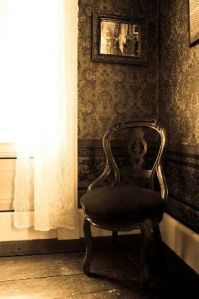
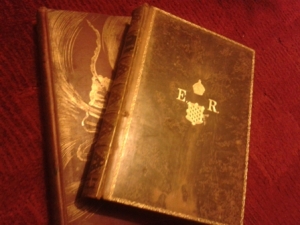
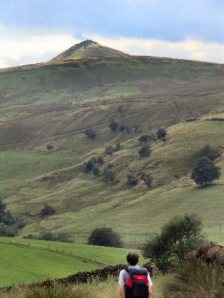
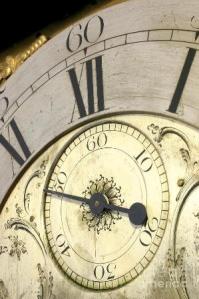
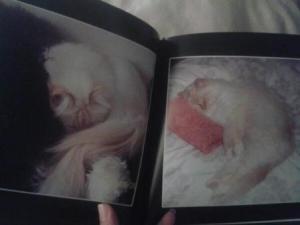

“While I appreciate the need for things made new, the relentless drive to upgrade and update is a bit wearying.” Yes, isn’t it just? Where will the stories be when we keep our entire life on a mobile device only to replace that one when the 24 month contract is up? This is why Kindles are not like books no matter what people say. How can I remember why there is a stain on page 78 of Wuthering Heights if there is no stain?It’s why I keep note books, buy CDs (although vinyl would be cooler!), keep diaries and my 38 year old cuddly owl which resembles nothing like an owl! All contain stories. Even my ancient microwave has a story 🙂
Lovely post Rachael. Really lovely.
This music fits when reading Rachael’s words (well to me anyway) https://www.youtube.com/watch?v=F6_tmePW28U